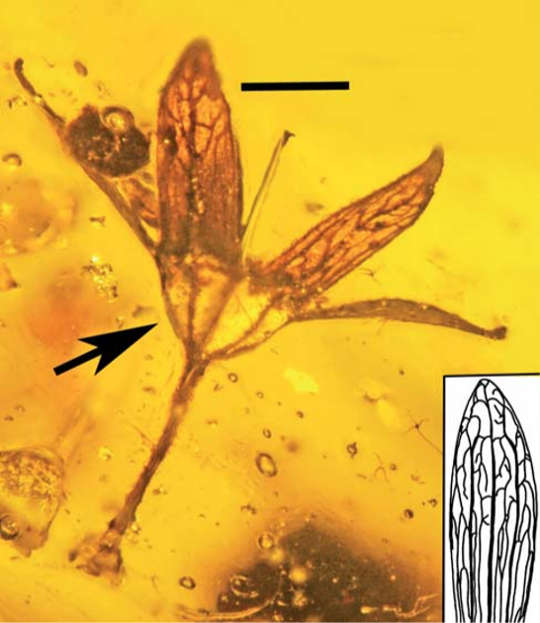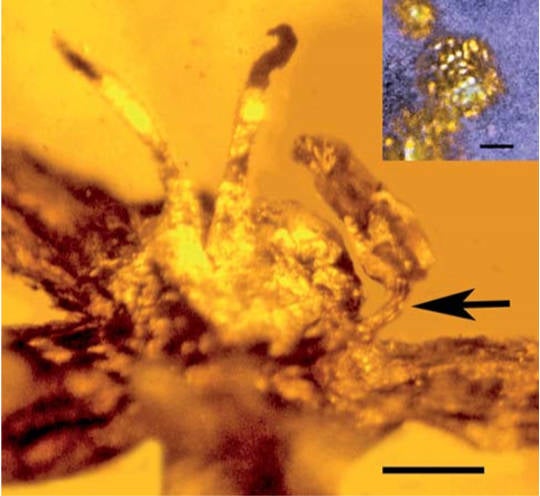This article was published in Scientific American’s former blog network and reflects the views of the author, not necessarily those of Scientific American
Sometimes a fossil gives you a glimpse of a world you never thought you’d get to see. They’re the best kind of treasures.

Bar = 0.7 mm. Insert: Inset shows sepal of a modern flower with very similar venation. Credit: Poinar, Jr. & Chambers 2017
Though only a few millimeters across, exquisite details of the petal-like sepals, the male and female parts, and even the pollen of Tropidogyne pentaptera are all preserved in 100-million year-old amber in a collection of seven specimens described by George Poinar, Jr. and Kenton Chambers in the journal Palaeodiversity last year. When these flowers bloomed, dinosaurs still had 35 million years to go as planetary overlords.
On supporting science journalism
If you're enjoying this article, consider supporting our award-winning journalism by subscribing. By purchasing a subscription you are helping to ensure the future of impactful stories about the discoveries and ideas shaping our world today.

Male and female flower parts (styles and stamen). Bar = 0.5 mm. Inset: pollen grain. Bar = 8 μm. Credit: Poinar, Jr. & Chambers 2017
The flowers grew during the Cretaceous period in the remnants of Gondwana, the southern supercontinent that calved into South America, Africa, Antarctica, India, and Australia. The land on which they grew is now part of Myanmar in southeast Asia.
The earliest fossilized flowers we have discovered lived around 140 million years ago, so T. pentaptera is not close to oldest. Still, 100 million years old is nothing to sneeze at, considering the typical flower half-life is measured in days.
Reference
Poinar Jr, George O., and Kenton L. Chambers. "Tropidogyne pentaptera, sp. nov., a new mid-Cretaceous fossil angiosperm flower in Burmese amber." Palaeodiversity 10, no. 1 (2017): 135-140.